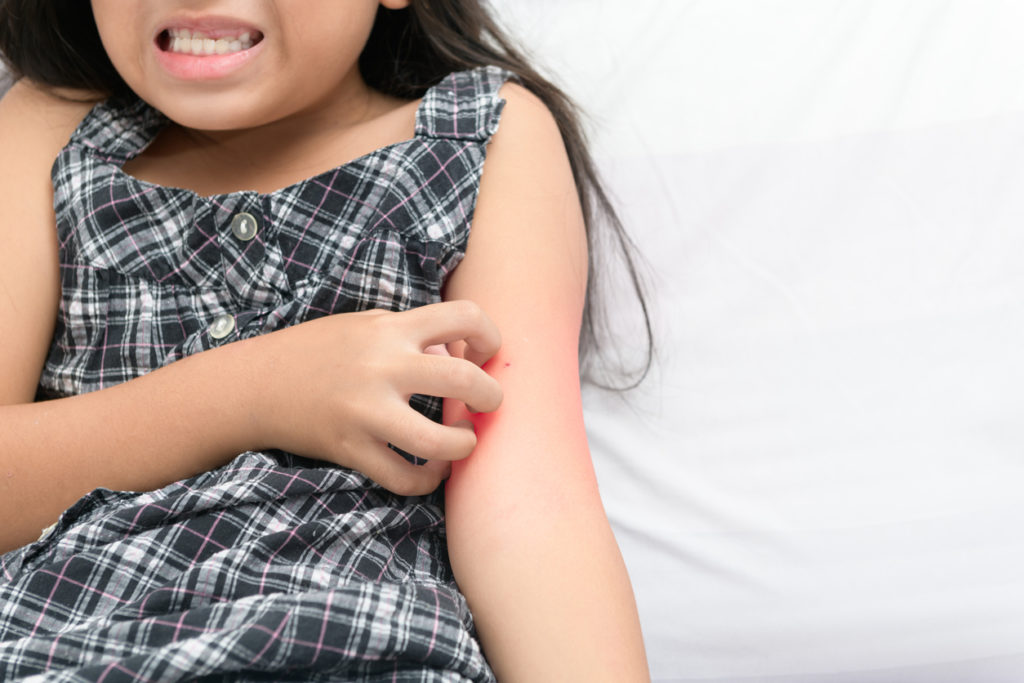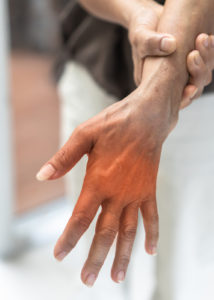Eczema is a skin condition that impacts people of all ages, from babies to adults. Not only is it visible in patches on the skin, but it can lead to skin infections, too. Those who have eczema find that their skin can be dry, itchy, and very uncomfortable at times.
It is most commonly found during the winter months but can impact babies and young children any time of the year. The good news is that most will eventually outgrow it. Until then, what does eczema look like and how is it treated? Let’s talk about it.
What Does Child Eczema Look Like?
An eczema rash can be different for every child. It will typically be a red, dry, scaly patch of skin for babies and young children. And, although it looks similar as kids grow and get older, it is not uncommon for the area to be more scaly and dry as well as appear thicker and darker.
One thing that sets eczema apart from other rashes is its often high-intensity itch.
Eczema can appear on all parts of the body and can change over time. The classic areas it is usually found on babies and young children include the face, the elbows, and the knees. It is rarely found in the diaper area.
As they get older this skin condition can be found on the hands and feet, the back of the knees, inside of elbows, on the arms, and more.
When Eczema Gets Infected
Eczema is not contagious, but it can get infected. This is usually the result of a weakened skin barrier that is unable to fight off the ordinary germs found on almost everyone’s skin, resulting in bacterial and viral infections. This can change the look of this condition.
Below are a few signs of what a skin infection looks like with eczema:
- Yellowish-brown crusting or scabbing over the rash area
- Weeping skin
- Blisters or us-filled bumps
Any time you see these things or any other changes in your child’s skin, it is important to make an appointment with your child’s pediatrician.
How is Eczema Diagnosed and Treated?
There are no specific tests that can be done to diagnose eczema. Rather, your pediatrician will examine the rash and discuss with you any other symptoms that may be present with it. Family history may also be part of the conversation.
Throughout the examination, the doctor may be able to rule out other conditions. This may involve asking you to remove certain foods from your child’s diet just to see whether or not there is a difference in the skin.
If necessary, a referral may be made to a dermatologist or allergy specialist.
While there is no cure for eczema, there are very effective treatments that can reduce and even eliminate symptoms. These include:
- Topical moisturizers. Keeping the skin moist is very important. You don’t just want to use any moisturizer as some may irritate the skin. Talk to your pediatrician for recommendations.
- Topical corticosteroids. Steroid creams or ointments provide relief by reducing inflammation.
- Oral medication. This may include antibiotics or corticosteroids based on the current condition of your child’s skin or if infection is present.
The method of treatment chosen by the pediatrician will vary based on the severity of the symptoms.
Advocare Haddon Pediatric Group is a highly experienced team of pediatricians serving patients from birth through college. They have been an established leader in pediatrics for decades in the Haddon Heights and Mullica Hill areas of New Jersey.



